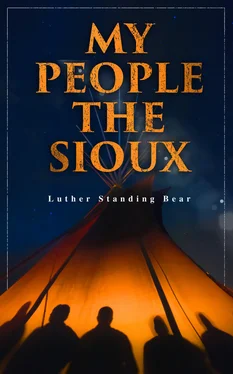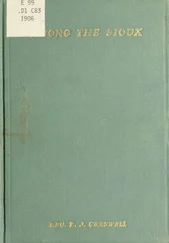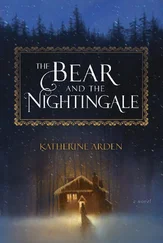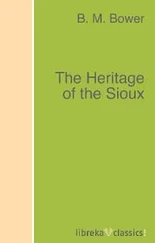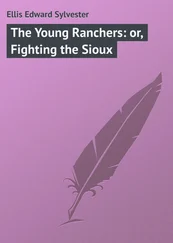The players would always try to get the best of the opposing side. Sometimes they would play with one hand held behind them. At other times they would hold the ‘ta-si-ha’ in the left hand. It was great fun to watch this game. Some of the young men were so bashful they would cover their faces, not caring if they won or lost. All they desired was to be near the girl they loved. Some of these young men would have their fingers covered with German silver rings which they wanted the girls to see—much the same as the white youth who wears a diamond wants to ‘show it off.’
Our people believed that all work and no play was not good for any one. So the older people had a game called ‘hanpa-pe-cunpi.’ It was also known as the ‘moccasin’ or ‘hand game.’ It was played somewhat after the manner of ‘button, button, who’s got the button?’ But our play was more dignified. It required two men who were very skillful in concealing a small stick in the hand. There were two small sticks used, each about two inches long, and tied in the center with a string of dyed buckskin, some colored red and others blue, to represent the different sides playing against each other. In the center, between the players, were ten long sticks. These were used to ‘keep tally’ on. One man took charge of the score.
One whole band would play against another. When we would hear the men of our band talk about going over to another band to play the ‘hand game,’ we would get quite excited, and long for the day when we were grown up so we could play this game. Every one in camp would then get busy, looking around for something to be put up as a prize. There were blankets, otter skins, buffalo robes, moccasins—in fact, anything they could afford to donate.
After the sun had set and the shadows began to fall, our band would be ready to start. The men would go first, then the women, while we children stayed in the rear. Everybody would start to sing about the hand game, to let the other band know our band was coming, and it also served as a sort of challenge. The largest tipi was quickly cleared, all the beds being taken to another tipi. Indian perfume was then put all around, which filled the tipi with a delightful odor.
The players also were perfumed. They would enter first and take their places in the center of the tipi on one side. The women arranged themselves behind, and we children hung back in the rear of the women.
After our players were all seated, the other band would come in and seat themselves. They took the same formation on the other side of the tipi. One of the old warriors held the two sticks, and when every one was seated, and all was quiet, he recounted his deeds in war. After he had finished, he would hand the sticks to two men of one side who he judged were able to uphold the honor of their band. The opposing side selected one man to act as ‘guesser’ for their band. He would take his seat directly in front of the two players.
The game would begin with singing, the players slapping their hands together and hitting the ground, then putting their hands behind their backs and going through all sorts of motions to deceive the guesser. These motions were kept up all through the singing. As the song came near to the end, the guesser had to tell in which hand both players held the little piece of wood. If he pointed to the left hand, it meant that he had concluded the wood was in their left hands; and the same for the right hands. If the guesser put his hand right in front of him, with the thumb pointing one way and the finger the other, it meant that the players held the wood in the two outside hands. If he pointed straight out, it meant they held the wood in the center hands.
If the guesser made a mistake, the players received two of the long sticks for their side. If he guessed right on one of the players, it gave the players’ side only one stick, while the player who fooled the guesser played alone. He had to be very careful after that, because it was much easier where the guesser had only one man to watch.
Sometimes a young woman or a young man would get up and commence to dance for the purpose of distracting attention of the guesser. It was very hard to keep the mind on both players when the dancers’ bells were ringing. If the guesser missed on the man who was playing alone, it gave the players’ side another stick, and both men played together again.
As soon as the guesser had caught both men correctly, they handed over their little sticks to the other band, and the same tactics were repeated. The important thing was to keep the long sticks away from the opposing band, and, if the guesser did not prove to be very skillful, he was replaced by some one else.
When one side had won about eight of the ten long sticks and were playing again, the excitement would be great. But if the guesser could beat the two men on the first call, they had to hand over the small sticks to the other party. The two long sticks remained in the center, and were yet to be won.
It might happen that the opposite side might begin to have better luck, and might win the two sticks in the center. Then, if they won again, they would begin to take the sticks from the other band.
When one side had won the ten sticks, it counted as one game. The best two out of three games was the way it was usually played. After the game was over, the losing side would set up a big feast for the victors, besides giving all the prizes.
The band which won would then go home, singing and rejoicing on the way. Then they waited for the losers to ‘stage a come-back.’ If they did not do this, then the winning band would go to another tipi to play the game, and try to win once more. My father was chosen many times to act as guesser for his band, and he was very skillful at it.
In those days it was great fun to attend a game of ‘han-pa-pe-cunpi’ with the whole family. The men would play it away into the night, with every one watching very intently. When we children grew sleepy, we lay down and went to sleep.
If the men wanted to smoke, but one pipe was used, and this was passed between the men. No drinks were served which took away the senses of our men and women, so no one grew boisterous. We had no bad words in our language, so none were used. Truly, our sleep was a healthful one.
I have spoken of the ‘i-ca-slo-he’ or marble game for the young women, but there was a marble game for the small boys also. It was an indoor game, to be played on cold winter nights when a fire was built. We would find some round stones and get the bark of a tree, or a smooth, flat piece of stone. If we could find neither bark nor flat stone, we would use our hand or forearm. This we held at an angle. We would pull some ashes out of the fire and mark trenches through the piles. Then we would start our marbles down grade, and the marble which went over the greatest number of trenches won the game. While we all worked very hard to make our marbles go farthest, there was no cheating, but the game was played fairly.
Another winter game, to be played out of doors, was the ‘i-pa-ho-tun-pi,’ or popgun game. In the olden times the popgun was made quite short, from ash or any wood that had a big heart. A hole was drilled through the heart of the wood. Perhaps you will wonder how this was done, inasmuch as we had no drills or wire at that time. It certainly did require some patience. The worker would take a thin stick and burn it on the end until it was red, when he would press it into the heart of the ash stick. This was repeated over and over again, and required considerable time before the hole was drilled through.
When the gun was finished, we had to get the ammunition. Sometimes we used the root of the fox medicine plant. We would peel off the outside bark and chew the inside until the sap was all gone, when it became quite a hard ball. A small ball was first inserted in the barrel of the gun, and allowed to roll down to the end until we could feel it. Then we put in a larger one. This left a small air space between the two balls. With a stick which would just fit into the gun barrel, we would push. This would shoot the ‘bullet’ out with some force, and it made quite a noise.
Читать дальше
